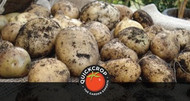How to Grow Potatoes
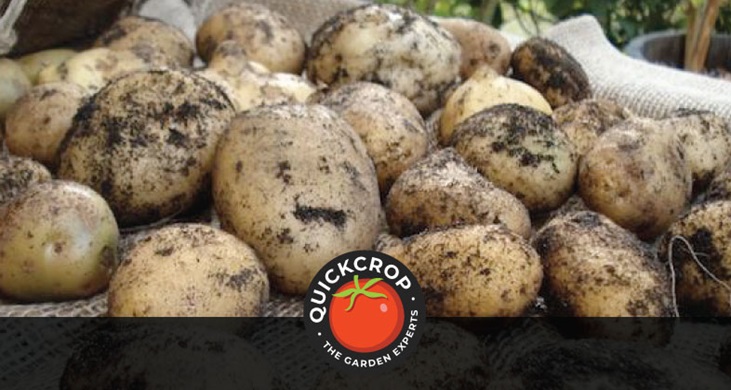
For me potatoes are the backbone of the vegetable garden. If you get the seed potatoes in relatively early, there is very little to do apart from earthing up and keeping an eye out for blight. Potatoes break up the soil nicely for the following crop, and should provide an excellent yield from a relatively small space.
There is also something so exciting about turning the soil at harvest time to see what you've got. I must admit to being a bit of a klutz here, and I manage to stab nearly every one with the prongs of my fork....
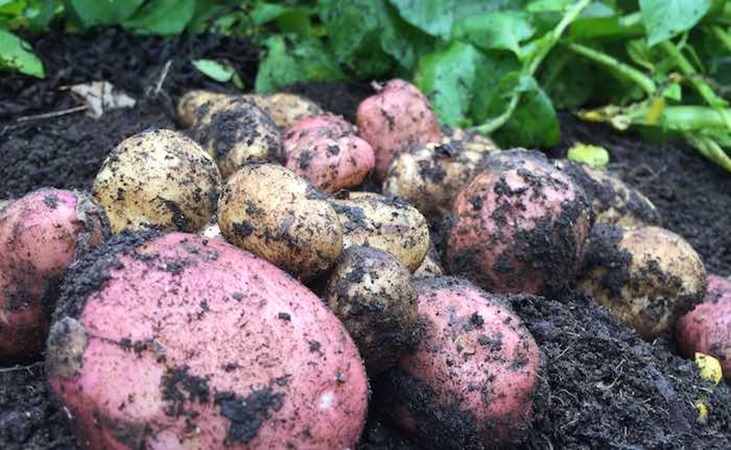
Apart from clearing the garden and adding manure or compost to your soil, planting potatoes is the first proper thing you can do in the vegetable garden. In Ireland early potatoes are traditionally planted on St. Patrick's Day, while in the rest of Europe it is the Spring equinox (yesterday as it happens) that signals the time to put early potatoes in the ground.
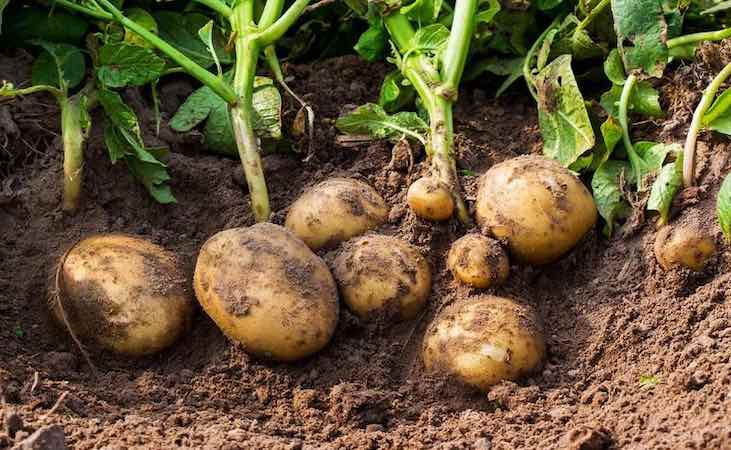
Potato Types Explained
Potatoes can be divided into 3 categories: early, second early and maincrop varieties.
The categories are defined by the length of time they take to reach maturity. If you prepare and plant the right way with this info, you can have a steady supply of potatoes harvesting from June through to October.
First earlies are planted around mid March, second earlies towards the end of March and maincrop varieties in early April. In warmer climates or by using a polytunnel it is possible to grow a second maincrop, planted in late summer, ready for the table at Christmas.

Charlotte First Early Potatoes
View ProductFirst earlies – Planting to picking: 90 days. Plant mid march. Harvest late June/July
Second earlies – Planting to picking:110 days. Plant early April. Harvest July
Maincrop – Planting to picking: 135 days. Plant mid to late April. Harvest October onwards.
Late Maincrop – Planting to picking:160 days. Plant mid to late April. Harvest October onwards.
As long as it is warm enough you can plant all categories. Staged planting is more about when you want to harvest the crop than when you can put them in.
What is the Best Time to Plant Potatoes?
I like to get my maincrop varieties in early, as I don't spray for blight. This way I will be removing all the potato foliage by the time the disease hits in late Summer. Removing the above ground plant stops blight reaching the tubers (as long as you don't leave it too late), but it also stops the growth of your potatoes. I figure the more growth I can get done before this happens the better.
The downside is that they will also be ready early and will sprout in storage if the weather is still warm. I leave them in the ground until October so I can harvest them in cool weather, but this does leave them open to slug attacks. There is never a perfect solution in gardening!
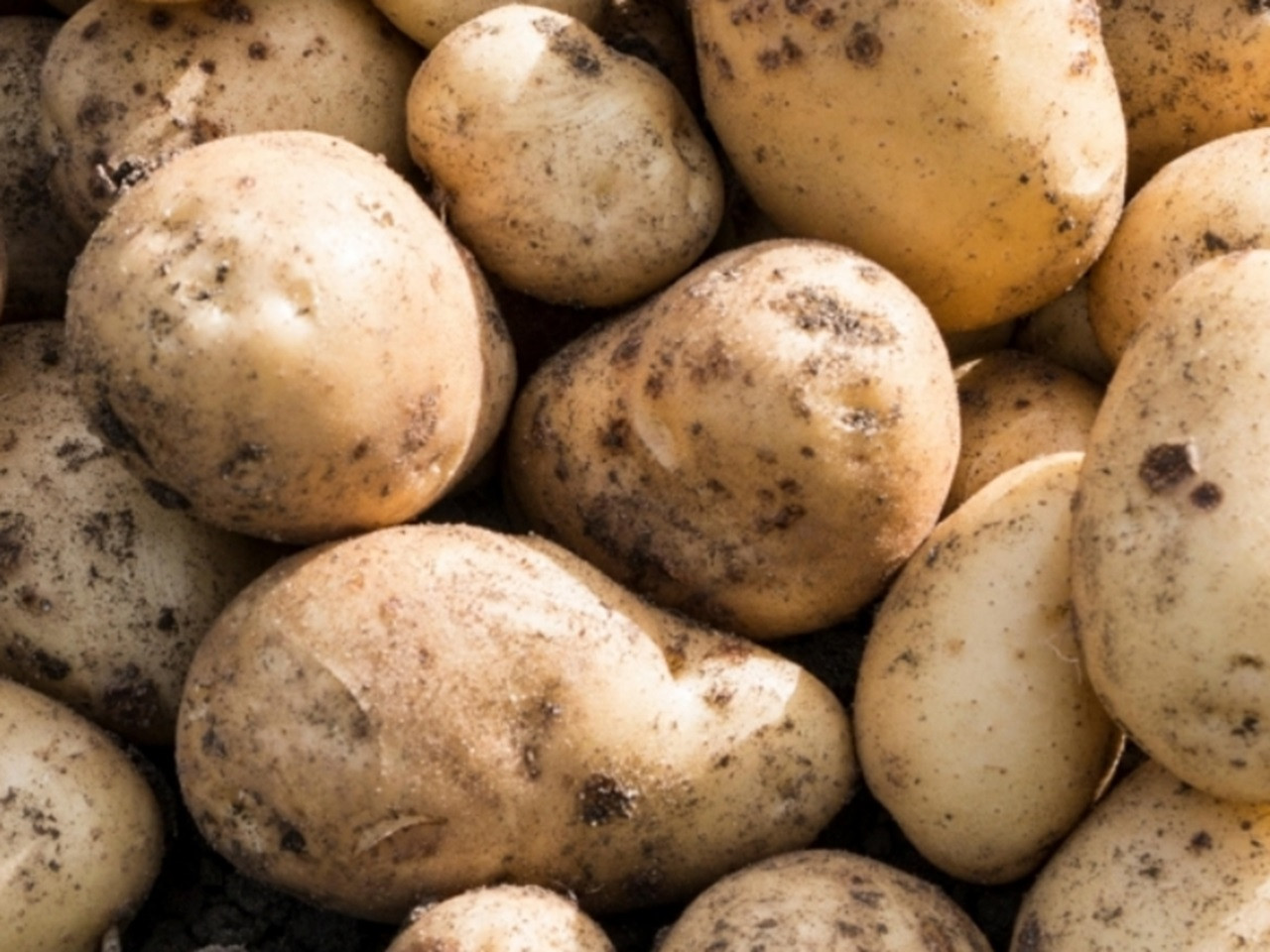
Homeguard First Early Potato
View Product
Which type of potato to choose?
As shown above, the different potato types are categorised by the time they take to mature; but there is also a size difference both in the plant and the potato.
If you have a small garden you are better off growing early varieties. They take up less room and are well suited to container gardening or bag cultivation. Also, because they are ready from late Spring, you can use the bed again for a follow on crop of another vegetable.
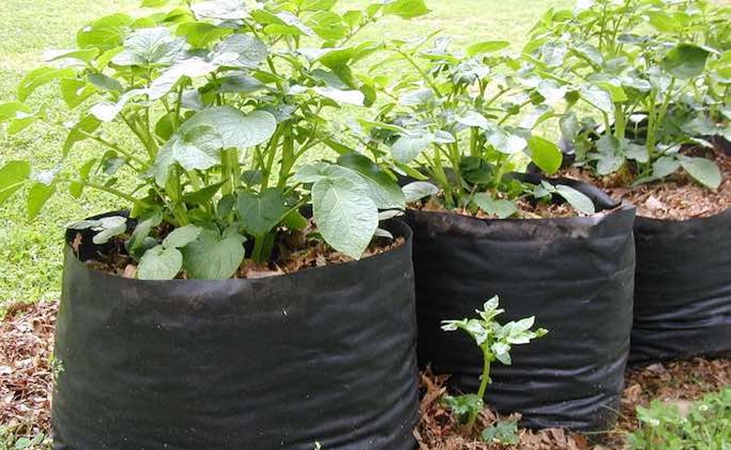
Earlies have the advantage of being ready before blight becomes a problem in mid to late Summer, so if you want to avoid spraying they are a good choice. First earlies can be ready to harvest 10 weeks after planting.
First and second earlies produce smaller potatoes, but what they lack in size is made up for in flavour. Earlies are dug and eaten as you need them so have the best fresh potato taste - you will never experience this from shop bought varieties. The fresh flavour is most apparent in first earlies. My favourite is 'Red Duke of York', which is floury yet firm with a delicious flavour.

Red Duke of York First Early Potato 2024
View ProductMaincrop varieties have a higher yield and produce much larger potatoes. They are more suited to large gardens as they will need their growing space for the full season. While thin skinned earlies are not suited for storage, maincrop potatoes have a thicker skin and will keep all Winter. It is not always the case but as a rule of thumb, early potatoes tend to be more waxy while maincrops tend to be more floury.
If you are growing maincrop potatoes and want to avoid spraying, you need to choose blight-resistant varieties like the Hungarian 'Sarpo' range. Even blight-resistant varieties will get blight in the end, but they will hold out for longer. The size of the crop will depend at what point you have to cut away the leaves and stems.
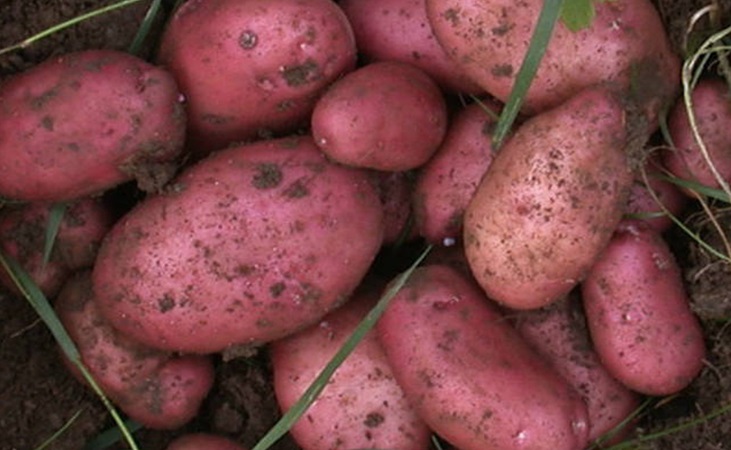
Chitting Potatoes
'Chitting' potatoes refers to where you leave the seed potato exposed to light for a week or two, causing it to produce sprouts. The idea is that it gives you a head start of about 10 days before you plant them in the ground. A potato has a blunt end with a number of small depressions or ‘eyes’. Place the potatoes in egg boxes on a windowsill with the ‘eyes’ facing upwards for 5-6 weeks until they start to form small shoots.
They are ready to plant when the shoots are about 1.5 to 2cm long. You don't want the shoots to get too long or they are likely to snap off when you plant the potato. N.B. You don't have to do this. They will still grow if you just stick them in the ground. Chitting just speeds things up, which is only relevant for early planted crops.
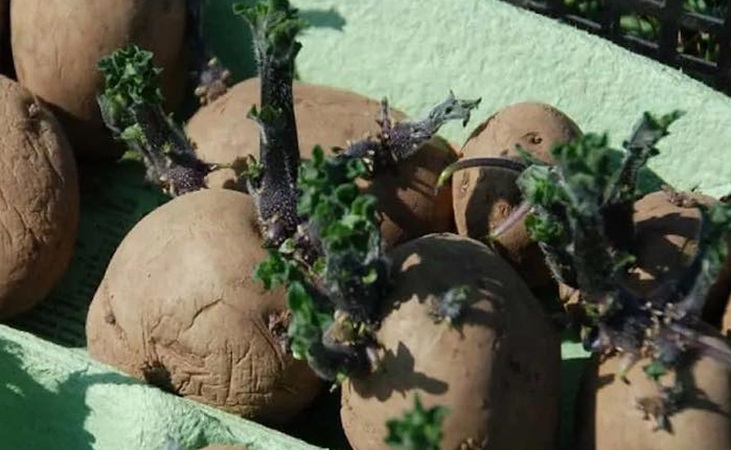
Planting Potatoes
Planting seed potatoes in ridges is recommended as it makes them much easier to earth up. Ridges are rows of mounded soil. Plant the potato 10 to 15cm deep into good fertile soil. It is traditional to plant with the side with the most 'eyes' or little shoots facing upwards. However in our experience this makes little or no difference.
First earlies should be planted 30cm apart in rows 50cm apart, while second earlies should be 40cm apart in rows 75cm apart.
Crop Care and 'Earthing Up'
‘Earthing up’ means dragging the surrounding soil up around the growing shoots of the potato plant. It might feel odd to cover the new growth but it has a number of benefits:
- If you've planted early potatoes, keep an eye out for frost as the early shoots can easily be damaged - earth up to protect.
- As potatoes grow, they will push up though the soil and become exposed to light. This can cause them to turn green. Green potatoes are poisonous (the potato and tomato are both members of the deadly nightshade family!) so obviously we want to avoid this.
- A good amount of soil covering the potatoes makes it less likely that blight spores will wash down and affect the tubers.
- Weeds are kept down and it is also thought to increase the yield.
Apart from frost protection you should earth up when the plant is approx 20cm high.
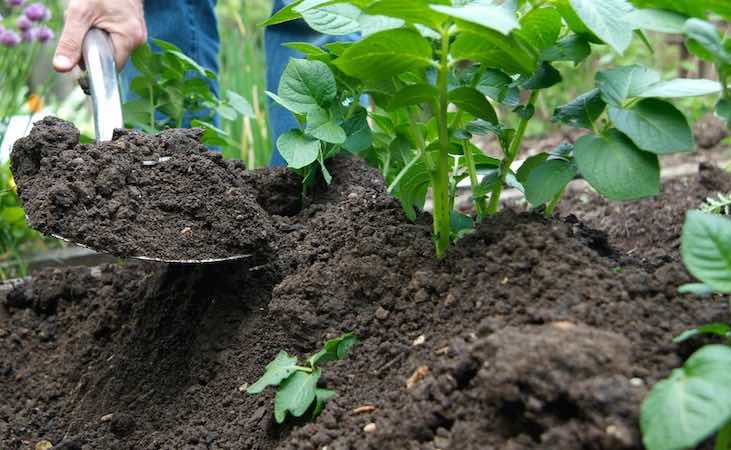
Avoiding the Dreaded Potato Blight
Potato Blight is an air borne disease which is at its worst in the more humid weather of July and August. There is really no way to treat it organically and (sadly) it is highly likely to occur. How badly it may affect your crop depends on the variety. There are 2 main ways the organic gardener can cope with the problem. These methods are based more on avoiding rather than treating the disease.
- Stick to the early seed potato varieties, as they will be ready to harvest before the worst of the blight hits. You may still get a small amount but this can be controlled by removing any diseased leaves or stems. Most of the growth will have taken place before this happens.
- Grow blight-resistant varieties. We now have an excellent choice of blight-resistant potato varieties. They are not completely immune to attack, but they’ll stay healthy for longer and won't suffer as badly. If you have a serious blight problem you should remove the foliage down to 2in from the ground. This will stop the growth of the tubers, but with a blight resistant strain you should have the majority of the growth done before this happens.
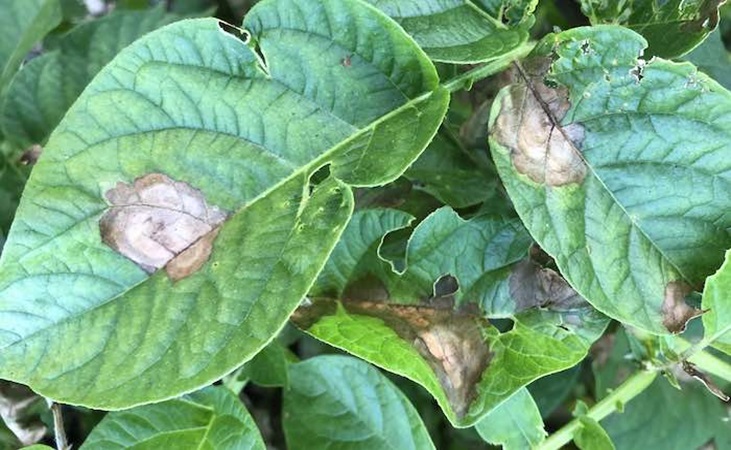
You are unlikely to get blight before July, so you should be o.k. with the early varieties. You will notice blight on the leaves first. If the attack isn't too severe you can just remove the affected leaves. If the problem persists you will need to remove all the foliage as already mentioned. Don't dig up the potatoes at this stage, as the tubers need to form a skin for storage. You should leave maincrop varieties in the ground until October to allow this to happen.
Foliar and tuber blight resistance
Blight attacks the leaves of your potato plant first. If left unchecked, it will travel down and infect your tubers. Blight resistance in potatoes can refer to the leaves (foliar) or the tuber (the potato under the ground), but most people tend to think of foliar resistance only.
Take for example a potato with mid-range foliar but high tuber resistance: the plant may be infected to such a degree above the ground that the foliage needs to be removed, but the crop underground will be unaffected and should store perfectly well.
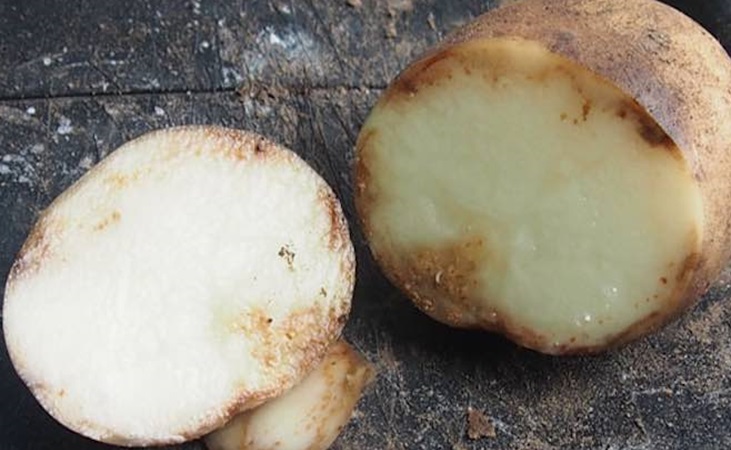
Harvesting Potatoes
Many books will tell you to wait until the plant flowers before harvesting potatoes. However some varieties - like Orla - don't flower at all in some years. Early potato varieties should be harvested as you need them because they don't store well. They can be lifted and eaten as soon as they're ready; this will be when above-ground growth is still green, and usually as soon as the flowers open.
There is nothing nicer than a freshly dug new potato, so get 'em out of the ground and into the pot! Maincrop varieties can remain in the ground over winter - unless you have a wet garden or a high slug population.
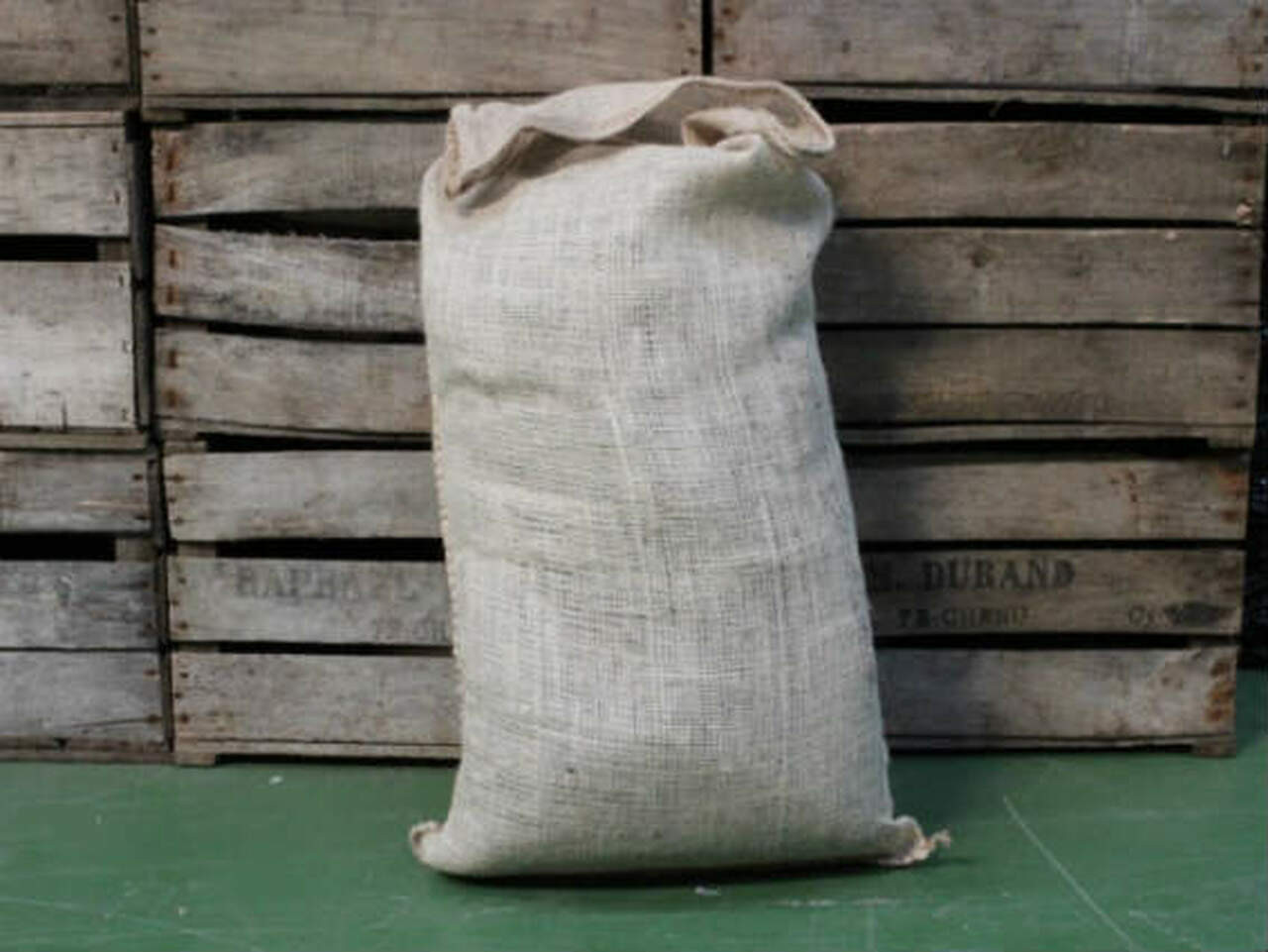
Hessian Potato Sacks
View ProductHarvest when the plant begins to die off by cutting back the stem and foliage; the tubers can be left in the ground until you need them. Lift them gently with a hand fork. I think it's safer to dig and store, especially in Ireland.
Store in boxes of sand or hessian potato bags in a cool frost free shed. Check periodically for any signs of rot, and remove affected tubers. It's important you harvest all the potatoes, or they'll come up again next year as weeds!
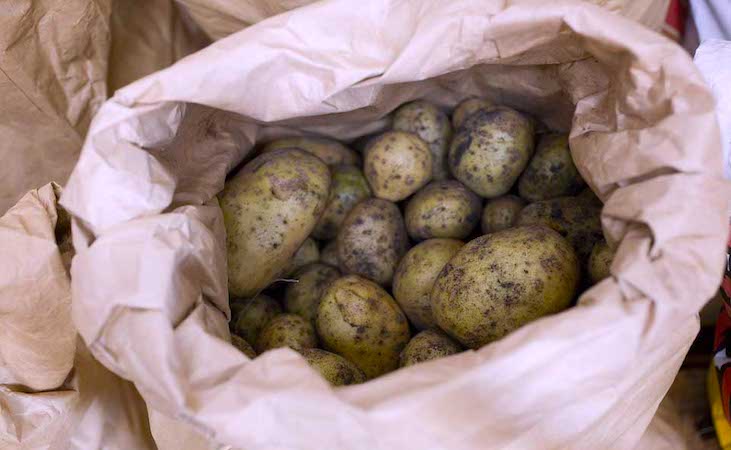
Growing Potatoes in Containers
Potatoes (particularly the early varieties) are very suitable for growing in
pots and containers. Indeed, growing in containers provides a number of benefits compared to growing outdoors.
The first is, of course, portability: the container can be moved around from patio to balcony or placed in full sun. When the potatoes are ready to harvest, you won’t have to go at the soil with a fork or a hoe (potentially damaging the tubers). The container will also protect the potatoes from pests, worms etc.

Jute Potato Planter Bag
View ProductChoose a large, deep pot to plant them in - it should be at least 15 inches deep. The larger the container, the more room the roots have to stretch out. Buckets, dustbins, tyres, grow bags…all of these can be used or repurposed to grow potatoes. Fill the container to 4 or 5 inches with peat-free, multipurpose compost or high-quality potting soil.
Place the seed potatoes (ideally they should be chitted) with the ‘eyes’ side facing up, and cover with 8-10cm of compost. Have the containers in a sun-facing area for a good 6-8 hours a day. As the potatoes grow you can ‘earth up’ in a similar way to that we mentioned earlier.
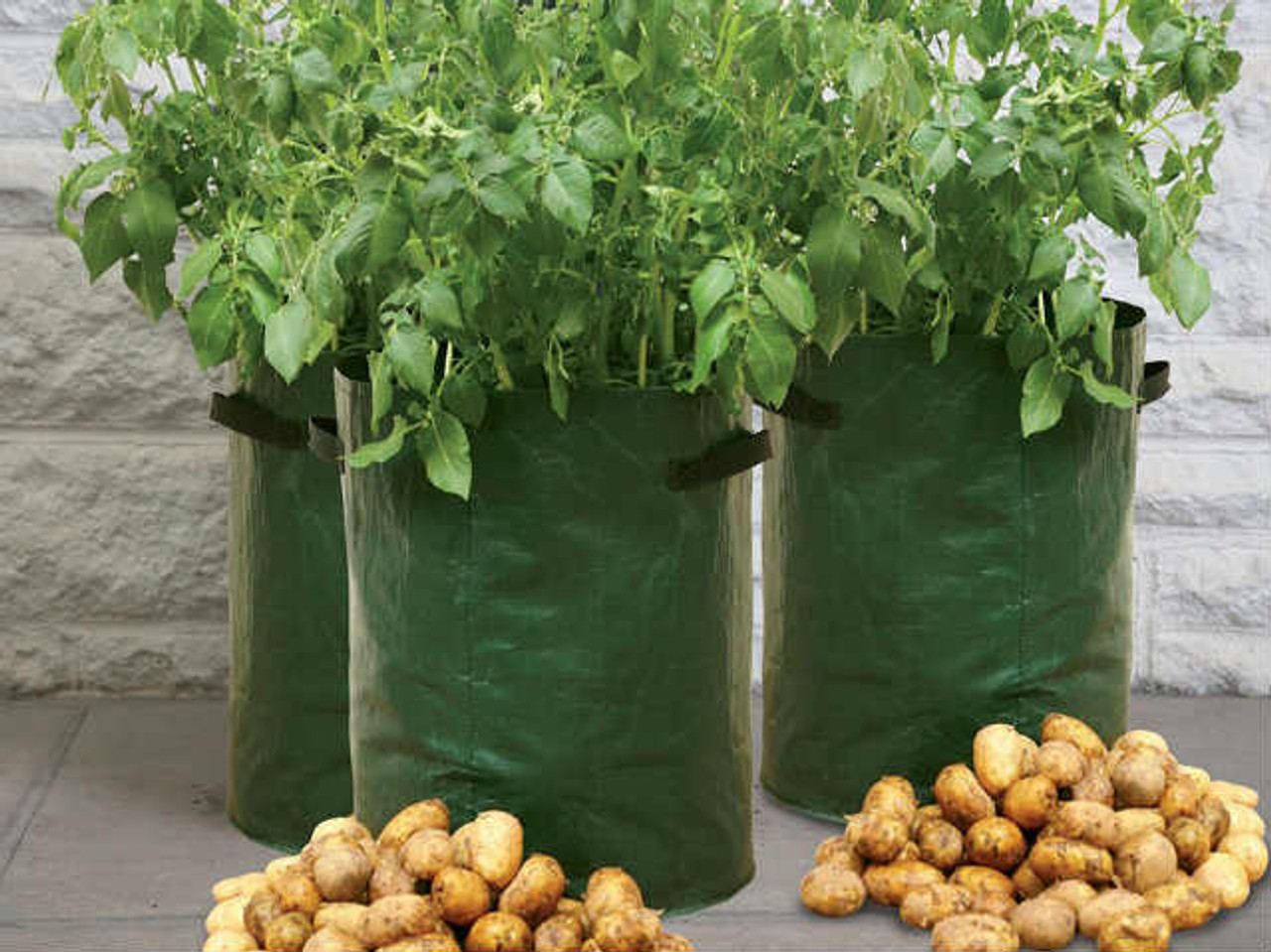
Potato Planter Grow Bag - Single
View ProductOne thing to watch out for when growing potatoes in containers is that the soil will dry out quicker - so you will need to water more regularly than if your potatoes were growing in the ground outside. Water thoroughly and wait until it’s leaking out the bottom.
